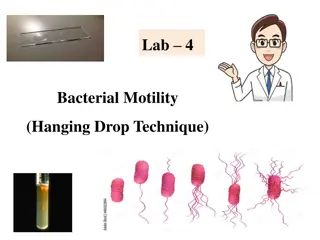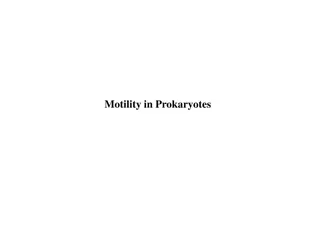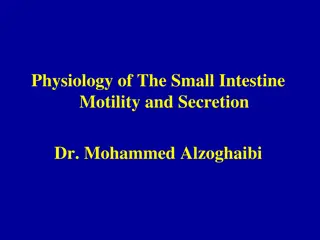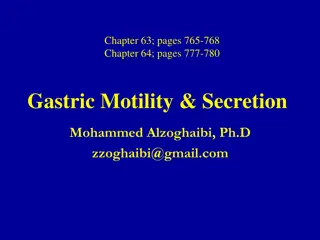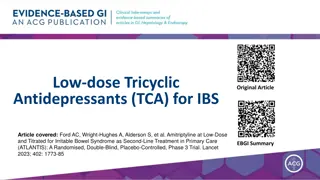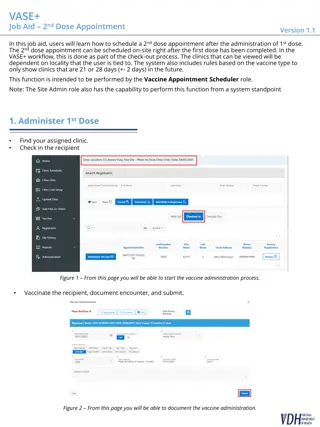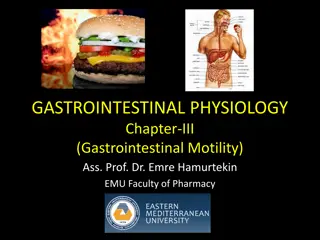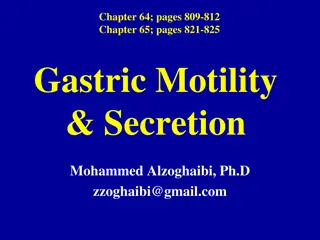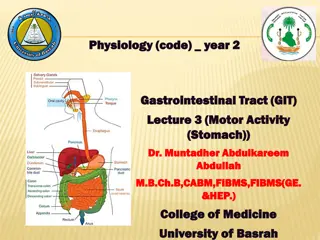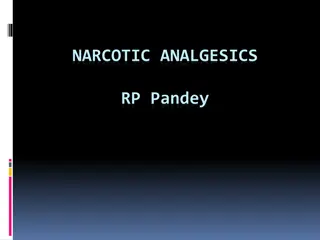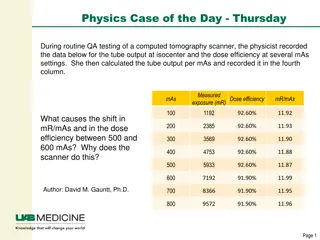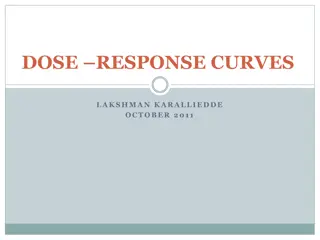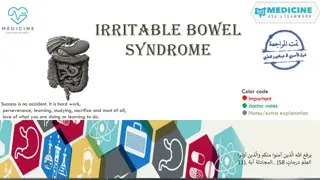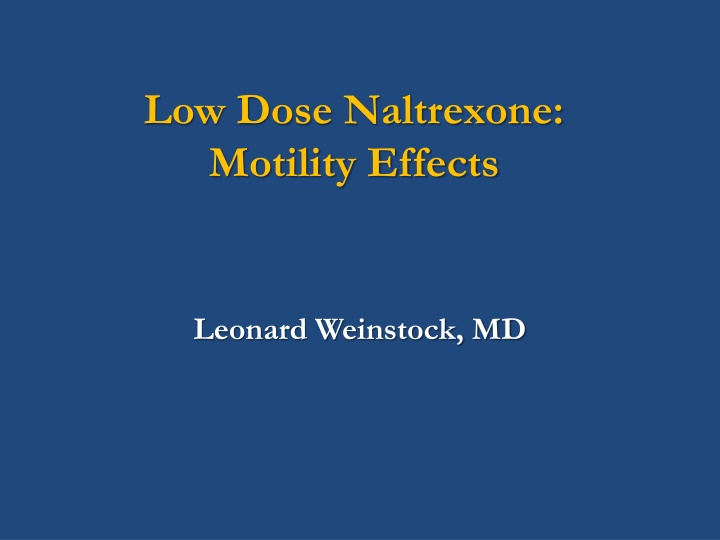
Low Dose Naltrexone: Motility Effects and Endorphins
In this presentation by Dr. Leonard Weinstock, the motility effects of Low Dose Naltrexone (LDN) are explored, along with its unexpected impact on endorphins. The mechanism of action, functions of endorphins, and the role of opioid receptors in the GI tract are discussed in detail.
Download Presentation

Please find below an Image/Link to download the presentation.
The content on the website is provided AS IS for your information and personal use only. It may not be sold, licensed, or shared on other websites without obtaining consent from the author. If you encounter any issues during the download, it is possible that the publisher has removed the file from their server.
You are allowed to download the files provided on this website for personal or commercial use, subject to the condition that they are used lawfully. All files are the property of their respective owners.
The content on the website is provided AS IS for your information and personal use only. It may not be sold, licensed, or shared on other websites without obtaining consent from the author.
E N D
Presentation Transcript
Low Dose Naltrexone: Motility Effects Leonard Weinstock, MD
Disclosures Speakers Bureaus Salix Entera Health Forrest Off label use of medications
Low Dose Naltrexone: Motility Effects Unexpected effect on endorphins by being an opioid blocker Motility effects of endorphins, short-acting narcotics and naltrexone are counterintuitive
Topics Brief Review of LDN Opioid Receptors and Functions Opioids and Endorphins on MMC (important for SIBO) Anti-opiates in Humans in Constipation
LDN: mechanism of action LDN displaces endorphins from opioid receptors for 4 hours Cells sense opioid deficiency and rebound via a positive feedback mechanism Receptors increased Met-enkephalin production x 12-15 fold
Endorphins: Functions Regulate cell growth Decrease inflammation Decrease vascular permeability Stabilize Toll-like receptors Decrease microglia activation (reduce pain) Decrease cytokine release Shift from TH2 to TH1 immunity Motility effects ?
Opioid Receptors in GI Tract Activation causes constipation by increased absorption and decreased secretion Activation slows motility by continuous contraction
Endogenous Opioid Activity and Constipation
Opioid Receptors Experimental inflammation in mice: Increase gut -opioid receptors Enhances potency of opioids to slow GI transit Abdominal surgery leads increase in endomorphin in humans Opioid receptor antagonists normalize pathologic inhibition of gut function that arises from opioid upregulation and/or over- activity Holzer. Regul Pept 2009;155:11.
Endogenous Opioids Thought to play a role in the fine tuning of digestion Endogenous opioid peptides participate in neural control of peristalsis by dampening peristaltic performance via activation of mu and kappa receptors Distention-evoked peristalsis can be facilitated by naloxone in 4 animal models Holzer, P. Regul Pept 2009; 155: 11 17.
Morphine and MMC - Dogs In normal fasted dogs, morphine initiated phase III of the MMC in the duodenum which propagated distally This effect of morphine was blocked by the opioid receptor antagonists naloxone Telford. Am J Physiol 1985;249:G557.
Morphine and MMC: Man Healthy subjects given MS (100 mcg/kg IV bolus) Stimulated migrating bursts of phasic activity (similar to phase III of MMC) Morphine stimulated ileal flow Borody. Gastroenterology 1985;89:562.
Endorphins and MMC: Chickens Phase III of MMC studied in chickens EMG study in stomach and entire small intestine Met-enkephalin infused i.v. Triggered an intestinal migrating activity concurrent with gastric inhibition Migrating activity started in distal duodenum and propagated to ileum - effects partially blocked by naloxone Jimenez. Life Sci 1992;50:465. ?
Enkephalin and MMC: Man Met-enkephalin analogue studied in 17 humans M-E induced a premature phase III of the MMC starting in the duodenum that migrated distally at a significantly higher velocity than a spontaneous phase III (potential role for LDN) Their theory: M-E induced an inhibition of the inhibitory nervous system Jians et al. Gastroenterology1987;93:114-20. fine tuning
Methyl-Naltrexone: opioid naive Compared effects of MNTX in na ve vs. opiate chronically treated guinea pigs MNTX blocked the inhibitory effect of acute morphine at any dose MNTX did not affect GI transit in na ve guinea pigs when administered acutely or for five consecutive days Anselmi, et al. Naunyn Schmiedebergs Arch Pharmacol 2013;386:279.
Methyl-Naltrexone: opioid naive MNTX twice daily for 4 days and MNTX plus morphine for 6 days in horses Frequency of BM, weight of feces, moisture of feces content, intestinal transit time MNTX increased daily fecal weight in both groups MNTX partially prevented the effects of morphine on all four scores Boscan. Am J Vet Res 2006;67:998.
Naloxone and CIC: Case Reports Two pts with CIC requiring high dose laxatives were treated with naloxone (single-blind crossover basis) Both responded to naloxone - increased frequency and weight of BM Positive response with oral and IV: Primary effect of naloxone is at receptor sites in the myenteric plexus and other neural and endocrine cells of the intestinal wall Kreek et al. Lancet 1983;1:261.
LDN and Chronic Constipation (my observations) N=12; Open-label Rx 2.5 mg twice a day 58% markedly improved 1% moderately improved 25% mildly improve 1% unchanged Subsequently approximately 20 more pts are maintained on LDN for constipation Ploesser J, Weinstock LB, Thomas E. Internat J Pharm Compound 2010:171-173.
High Dose Naltrexone in IBS-c Study of tegaserod alone and combined with naltrexone 50 mg on intestinal transit and stool characteristics in females with IBS-c N = 48 randomized to tegaserod alone, naltrexone alone or in combination with tegaserod or placebo for 6 days. Small bowel and colon studied by nuclear testing Tegaserod increased small bowel and colon transit Naltrexone did not accelerate colonic transit relative to placebo Combination treatment did not significantly accelerate transit relative to tegaserod alone Foxx-Orenstein et al. Neurogastroenterol Motil 2007;19:821.
Naltrexone Improve GI motility via fine tune blocking endogenous opioids? Prevent SIBO by increasing endorphins which increase MMC? Reduce inflammation with a secondary effect of normalizing motility? Reduce pain of IBS via Toll-receptor activity and allow for better motility?

